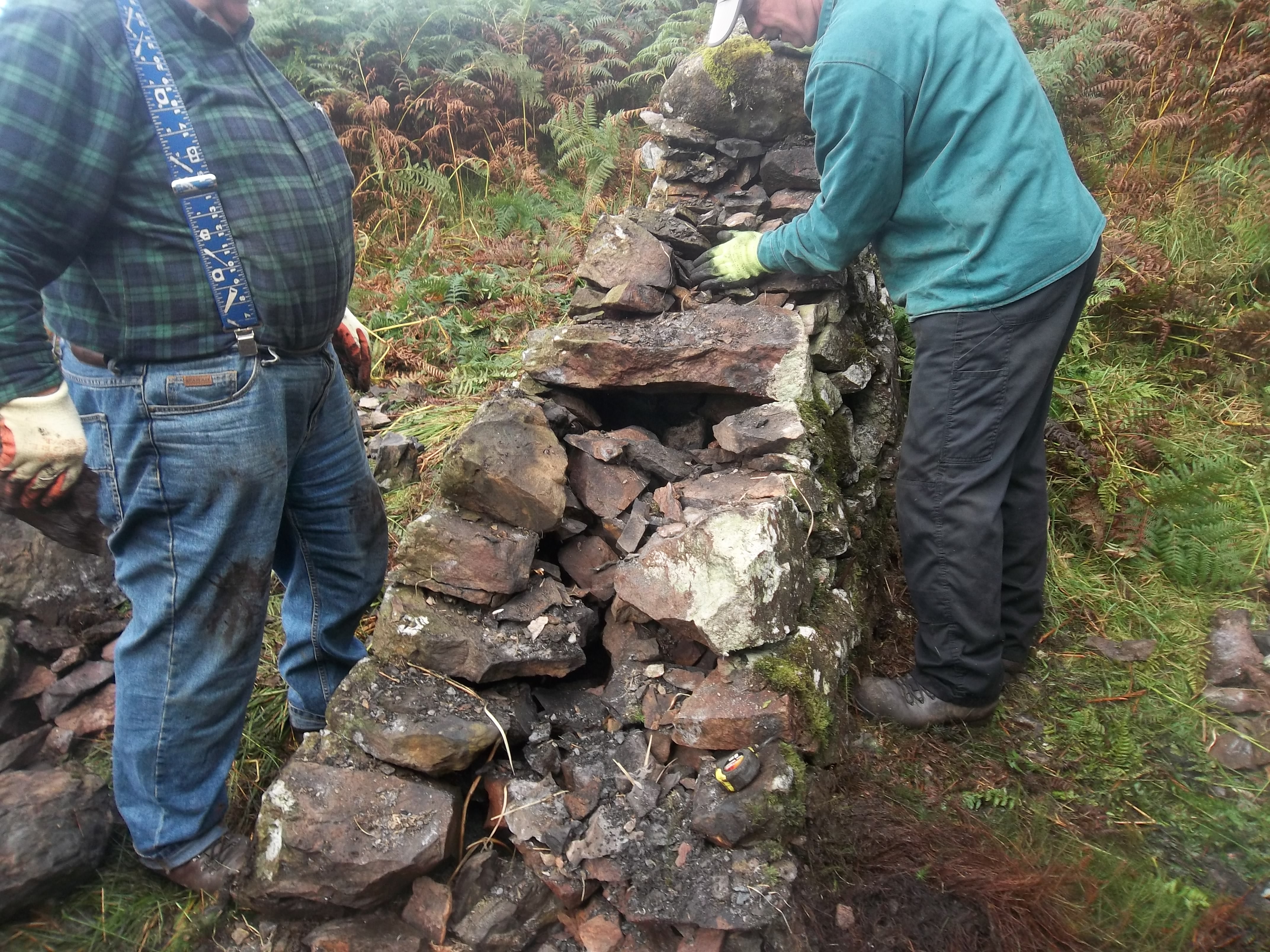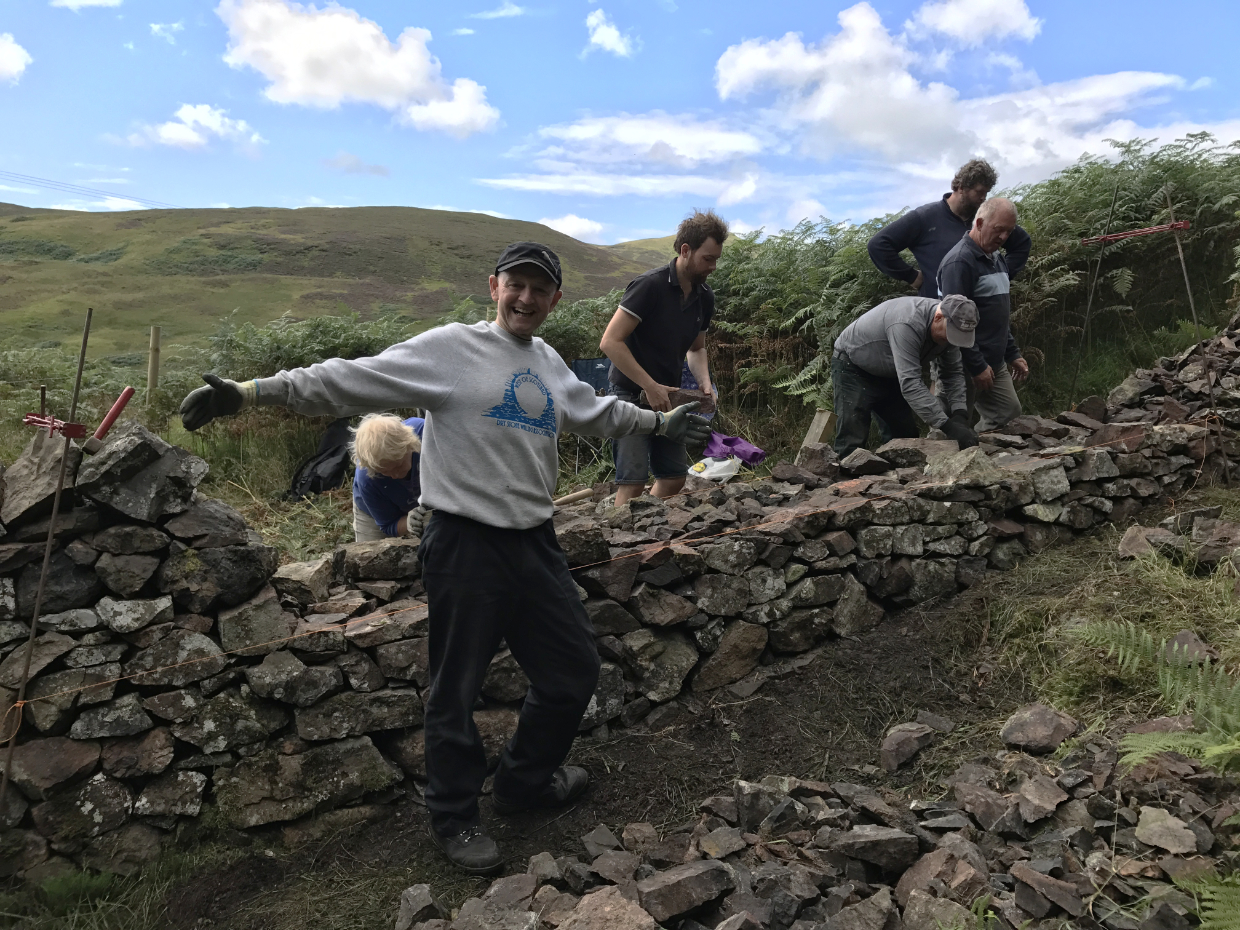The origins of building in dry stone, i.e. without the use of mortar, are lost in the mists of antiquity. The use of stone in various builds such as funeral chambers and living accommodation date from the Stone and Iron Ages. The legacies of dry stone constructions in the Orkney and Shetland Islands to the brochs and duns of Caithness and Argyll and the thousands of miles of field walls in principally Scotland, Yorkshire, Cumbria and Derbyshire are well known. It is this heritage which is actively carried on today by the West of Scotland Dry Stone Walling Association, using exactly the same principles of construction employed so many years ago.

Inspecting a 100 year-old wall as it is taken down
There appears no contemporary evidence that gives definitive proof as to why dry stone walls proliferated throughout the country. An educated guess is that the Enclosure Acts of the 18th and 19th centuries had a great deal to do with it. The demarcation of land into private ownership would have provided a strong impetus to mark out claimed territory with permanent boundaries and stone and labour were in plentiful supply at the time. Nevertheless, farmers also saw the merits of enclosing their fields with dry stone walls. Dry stone walls provided protection and shelter for valuable livestock from the elements and, just as importantly, the native wildlife and flora. It is now over 200 years since dry stone walls became a permanent feature of the landscape, a testament to their durability and the skill of the men who built them. The scale of wall building throughout Britain is enormous; it has been estimated that thousands of miles of wall exist in Yorkshire alone.

How much wall will you be building today?
Regional styles and patterns of construction do vary throughout the country but the principles of construction established thousands of years ago are still practiced to this day. Regrettably, there is little written historical record of those who practiced the craft in the early days. The evidence that currently exists points to a hard life with little monetary reward; however this is offset by the fact that the craft engendered a fierce sense of pride and achievement in those who practised it.
Wallers were either farm/estate workers or were contracted in for the duration of work. Measurement of the length to be built was either by tape or chain; the latter contoured the ground more favourably giving the waller a fairer payment for his labour. After preparation of the ground, a waller could be expected to build some 6-8 yards (metres) in a day, which lasted for 12-14 hours. In the early 1900’s, a waller could expect payment ranging from five pence to 8 pence per yard. Although the waller was physically tough and energetic, in the days before industrial gloves, he still suffered from finger damage from the rough surfaces of the stone. An interesting anecdote is described by Robert Cairns in an article in tribute to his father’s exploits as a waller, which describes how each finger was wrapped in a strip of cotton material tied off with thread above the first joint. Thumbs were wrapped in makeshift leather or rubber tubes. One-handed and with his teeth, a waller could wrap all eight fingers in ten minutes. Wallers without teeth relied on friendly landladies!

